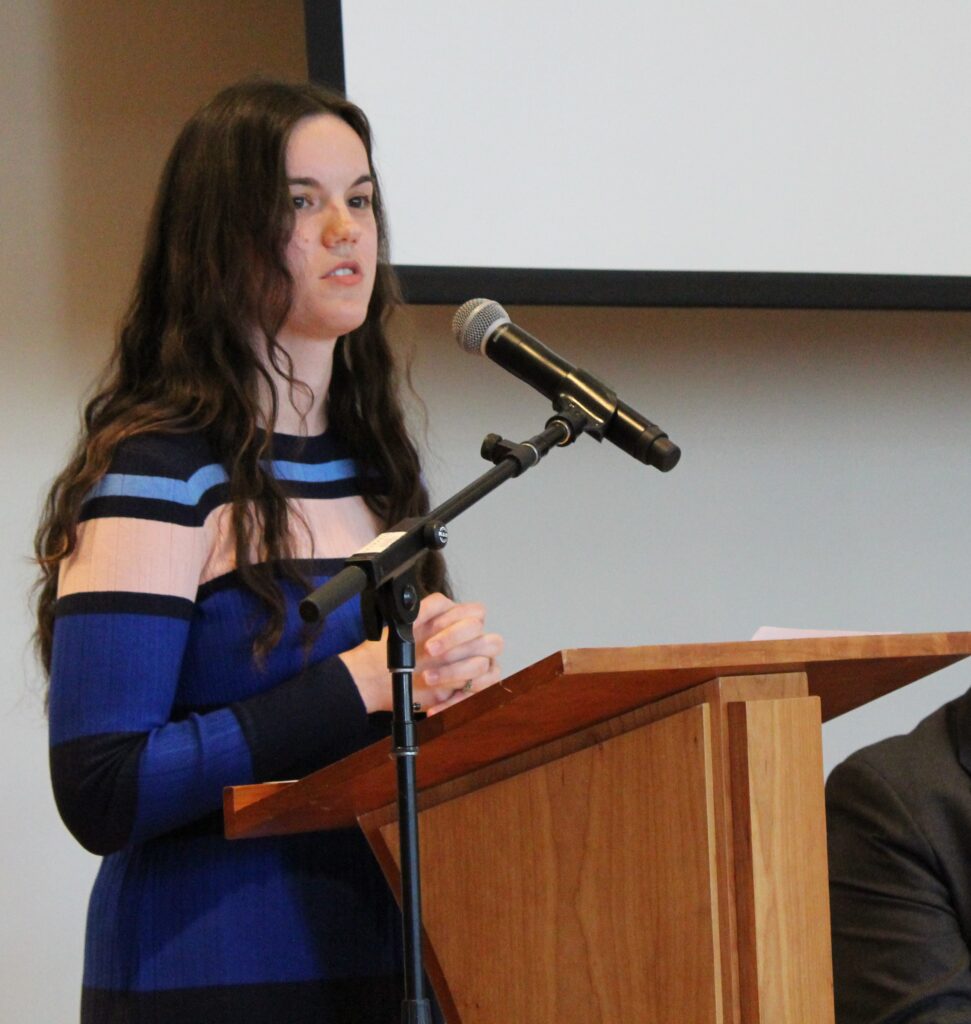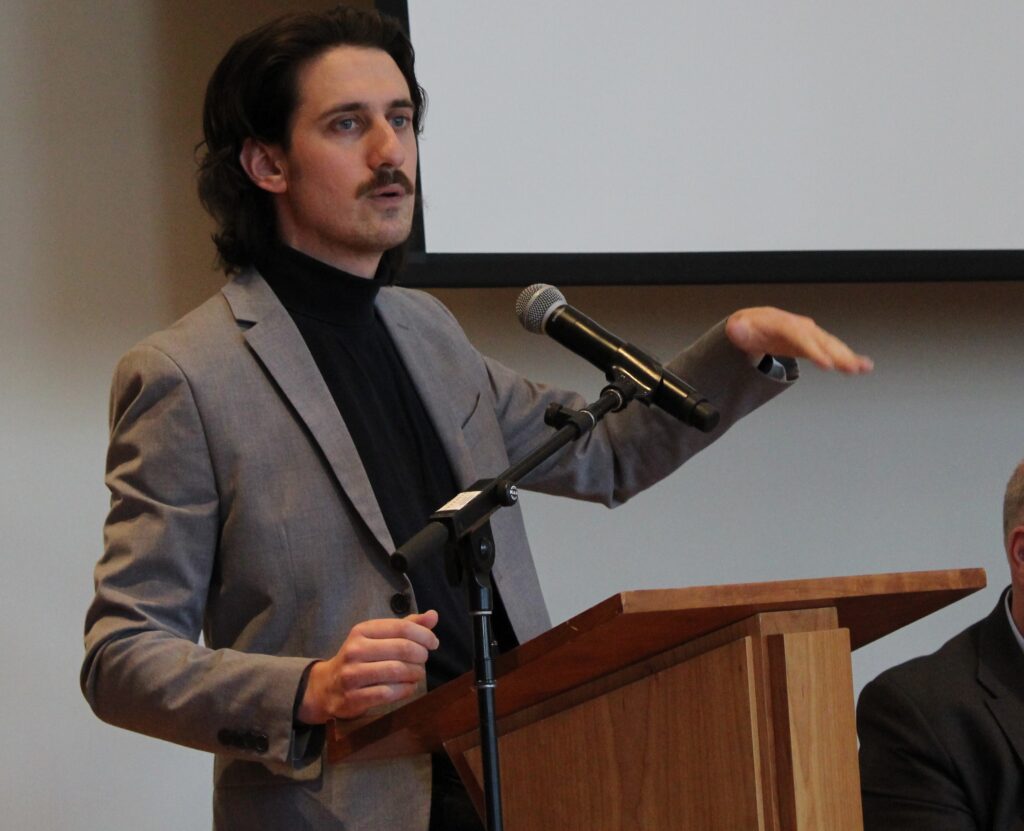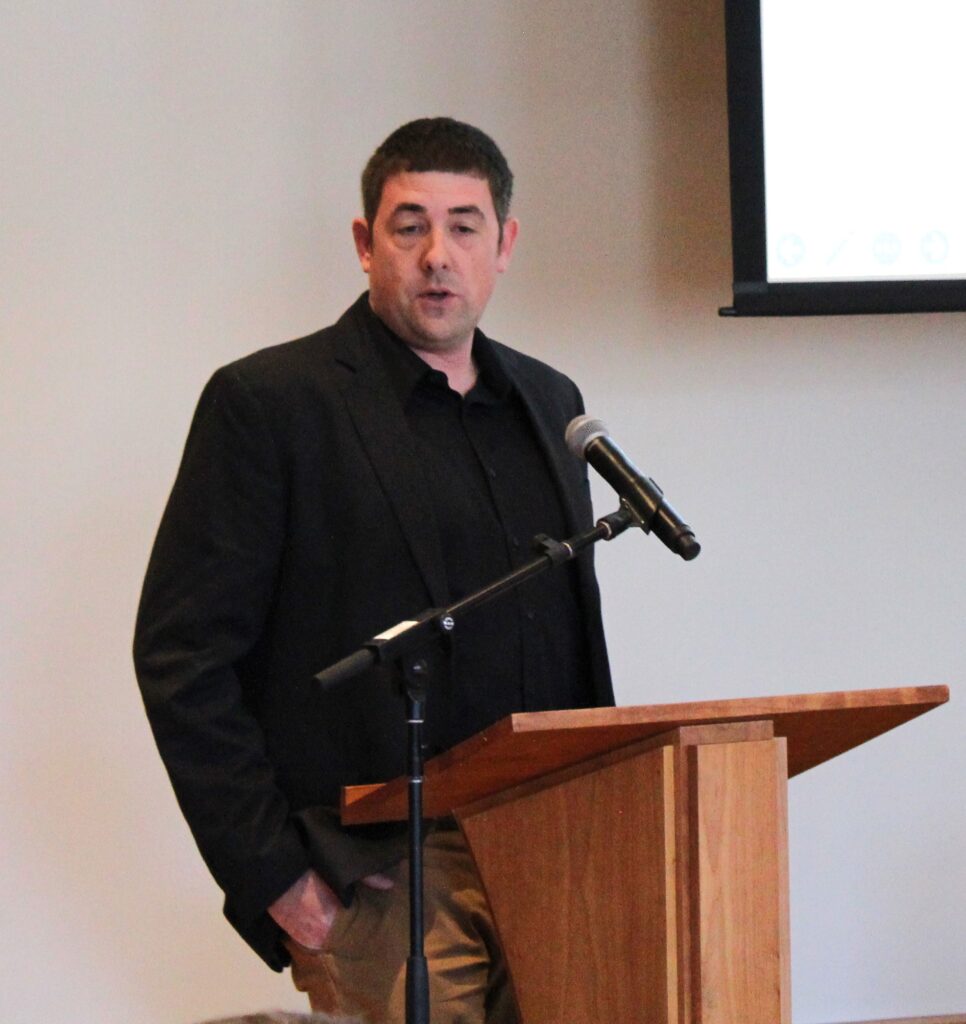The March, Hourglass First Friday Forum featured the initiatives and impact of the Lancaster County Conservation District (LCCD). The non-profit organization helps to focus attention on the smart use of land, water, and related natural resources. It helps individuals, public and private organizations in solving the complex problems of our environment.
Attendees heard from the five department heads of LCCD: Agriculture, Erosion and Sedimentation, Watersheds, Education, and Data and Analysis. Click here to view the PowerPoint slides.
Matt Kofroth (Assistant District Manager)

LCCD has been active for 75 years and is a “pseudo” county government agency with a board of directors made up of former and public directors. It has a staff of 40 individuals that run various programs.
Conservation districts started about 80 years ago during the dust bowl era, when dust was blowing from the Midwest to Washington DC. Individuals created districts to protect local resources. In 1945 Pennsylvania enacted Act 217, Conservation District Law, which created all the conservation districts in Pa. LCCD was incorporated in 1950.
Today, there are 66 conservation districts in Pa, and a potential new one coming to Philadelphia. LCCD has a large conservation district because of the mass amount of resource concerns. Lancaster County has over 5,100 farms and multiple residential and commercial developments. The county has over 1,700 miles of streams.
Currently the district has a budget of $15 million dollars, 90% of that money goes towards farmers who are enacting best management practices (BMP), schools to educate the students, locals parks and municipalities to screen restoration efforts.
Amanda Goldsmith (Watershed Specialist)

Water quality is at the center of what is done at the conservation district because all the streams in Lancaster that flow into Chesapeake Bay. Majority of the funding comes from initiatives to clean up the bay. The Chesapeake Bay extends multiple states and is 64,000 miles. The bay faces nutrient and sediment pollution in addition to multiple contaminants that have led to dead zones. Lancaster plays a pivotal role and is responsible for 20% of Pennsylvania’s reduction goals.
According to the Pennsylvania Department of Environment and Protection, 80% of Lancaster streams are impaired for wildlife. Watersheds are boundaries based on elevation and can vary in size. There are 12 smaller watersheds in Lancaster: the Susquehanna River, Cocalico, Mill and Pequea creek.
The watershed program includes three major parts. Stream restoration projects help install multiple stream restorations every year with the U.S Fish and Wildlife Service. The Monitoring program, is a volunteer-based initiative that collects water samples of streams. The program has over 70 volunteers that monitor 50 streams. Small Outreach and Technical Assistance, helps landowners deal with backyard stream, erosion, and storm water issues.
Adam Stern (Erosion & Sedimentation Program Manager)

The Erosion & Sedimentation team is responsible for implementing a specific set of regular programs in the County. The team runs the Chapter 102 program, which is done on behalf of the State Department of Environmental Protection, to regulate all earth disturbance actives to minimize erosion and sedimentation. They protect water quality, waterways and sediments from sedimentation, pollution and storm water runoff.
The daily tasks of the team include reviewing and approving plans, permits, inspecting active construction sites for compliance and responding to public complaints.
Regulated communities, set regulations on projects implementing an earth disturbance. The communities require everyone apart of the project to implement best management practices to control sediment. The best management practices are detailed in a manual and aim to keep sedimentation on site rather than letting it flow into stream and neighboring properties.
Kevin Lutz (Agriculture Program Manager)

The agriculture team handles the 5,100 farms in the County. The farms vary in size and have a wide range of animals. The goal of the team is to help farmers conserve soil and keep the nutrients in the field and out of the streams. Most of the work is done on a volunteer basis but there are regulatory components involved.
There is a small portion of, Chapter 102, that focuses on agriculture. The team is delegated through the Department of Environmental Protection. Within that program they are helping famers stay in compliance by making sure the plowing and tilling the farms are doing is not contributing to accelerated soil. To help farms with that, the organization creates an agriculture erosion incentive plan.
Sallie Gregory (Education and Operations Coordinator)

The education programs are focused on the humane impact on soil and water conservation. Gregory works with teachers and students to meet the state’s environment and ecology standards that were established in 2002, and will be updated to STEELS standards (Science, Technology, Engineering, Environmental Legacy, and Sustainably).
The programs include: Envirothon, a competition for grades 3-12 to demonstrate knowledge in wildlife, soil and environment issues; Teacher professional development, to support teachers in creating curriculums around STEELS standards; and Youth Conservation School, a six-day program for students ages 14-16 to learn about natural resource conservation.
Data and Analysis
LCCD recently, created a Data Analysis team to account for the various initiatives and share information. In 2022, the organization hired a Grants Coordinator, to find funding that is not tied to delegation agreements, which allows the organization to follow its mission. The Data Coordinator, gathers information from farms, agriculture, compliance, watershed projects and education. The organization will release updated information on the health of streams, lakes and ponds on its upcoming, Watershed Report Card. The organization hired a Best Management Practice Verification Coordinator, to ensure farmers and producers can receive credit for their BMP efforts.






